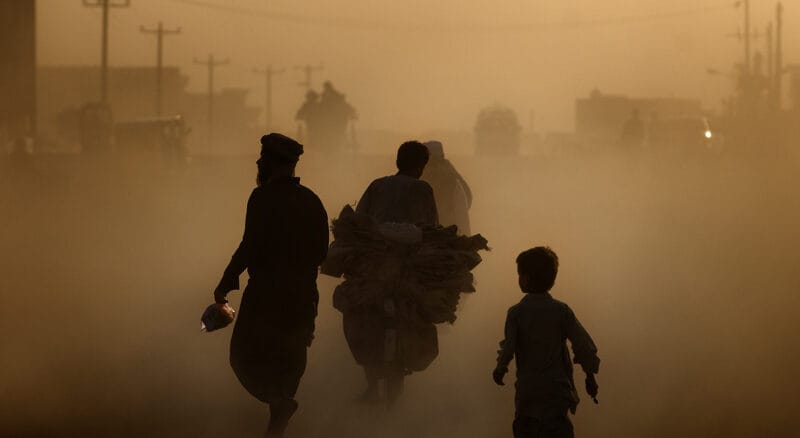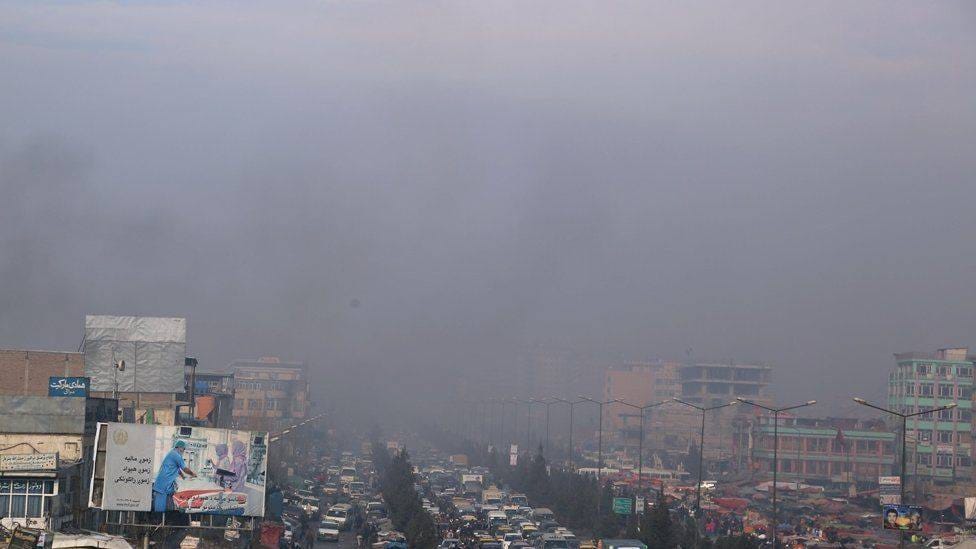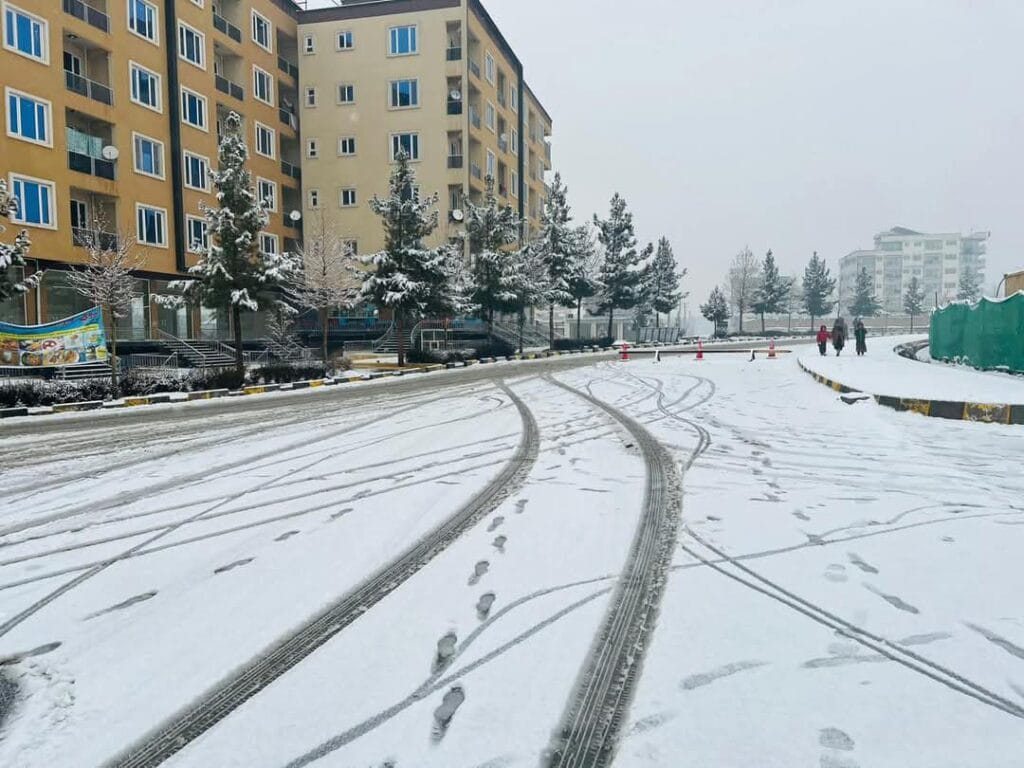
KABUL, Afghanistan – Officials from the Taliban-led National Environmental Protection Agency (NEPA) have pinpointed climate change, groundwater contamination, shrinking green spaces, unpaved roads, and the widespread use of low-quality fuel as significant factors contributing to Kabul’s worsening air pollution.
Zainul Abideen Abid, NEPA’s deputy for policy and technical affairs, stated at a press conference on Sunday that the agency is continuously monitoring air pollution levels in Kabul and other major cities to identify and mitigate sources of contamination.
“Climate change, groundwater pollution, diminishing green areas, unpaved roads, substandard fuel, and an increasing number of aging vehicles are among the primary causes of air pollution in Kabul,” Abid said.
He noted that while NEPA’s technical data shows a slight improvement in air quality over the first ten months of the current solar year (1403 in the Afghan calendar) compared to the previous year, significant challenges remain. A six-month operational plan has been developed in collaboration with relevant authorities to address these issues and is currently being implemented.
Afghanistan’s Silent Health Crisis: How Air Pollution Threatens Lives and What Can Be Done”
Fossil Fuels and Traffic Pollution
Abid emphasized that burning fossil fuels, particularly coal, wood, plastic, tires, and rubber, during the winter months is a major contributor to air pollution. He urged Kabul residents to minimize the use of such fuel sources whenever possible.
He also revealed that, over the past three months, authorities have impounded 4,211 high-emission vehicles in coordination with the Traffic Directorate to reduce air pollution.

Environmental Monitoring and Legal Action
NEPA teams have inspected 3,644 commercial establishments, high-rise buildings, factories, and other facilities to ensure compliance with environmental regulations. Legal actions have been taken against violators of these standards.
Kabul has experienced rapid population growth over the past two decades. However, the city’s inadequate urban planning and lack of a proper sewage system have worsened environmental issues. Residents now face a dual crisis of rising air pollution and an increasing shortage of potable water.

Water Crisis and Drought
The United Nations Office for the Coordination of Humanitarian Affairs (OCHA) reported on January 30 that at least 23% of Afghan households rely on untreated water. Ongoing drought conditions have further strained the country’s water resources, leaving 39% of households struggling to access clean drinking water.
According to UN reports, 25 of Afghanistan’s 34 provinces are experiencing drought, affecting more than half of the country’s population. OCHA noted that since 2021, the water demand has increased significantly, with 67% of households making substantial efforts to secure safe drinking water.
UNICEF has previously warned that unless immediate action is taken to address Kabul’s water crisis, the city’s groundwater reserves could be depleted entirely within six years.
Government Initiatives and Future Plans
Over the past three years, Afghan authorities have monitored more than 41,581 activities related to air pollution and conducted over 3,000 public awareness programs, reaching half a million people directly and millions more indirectly.
NEPA has also evaluated the environmental impact of 3,521 development projects across Afghanistan. Key initiatives include plans to construct wastewater treatment plants in Kabul, regulate sewage tankers, implement an eight-year reforestation program, develop emission control filters, and introduce vehicle environmental checks. A five-year strategy has also been developed to combat air pollution in major cities.
Severe Weather Alert: Afghanistan Braces for Heavy Rain, Snow, and Storms
Afghanistan’s Climate Vulnerability
The United Nations has ranked Afghanistan among the ten most climate-vulnerable countries worldwide. Despite the growing risks, the country remains ill-equipped to address the effects of climate change due to inadequate infrastructure and limited resources.
Without urgent intervention, Kabul’s environmental challenges will continue to pose severe health and economic risks for millions of residents.





Be the first to comment